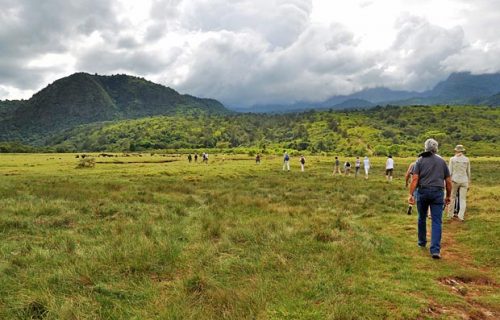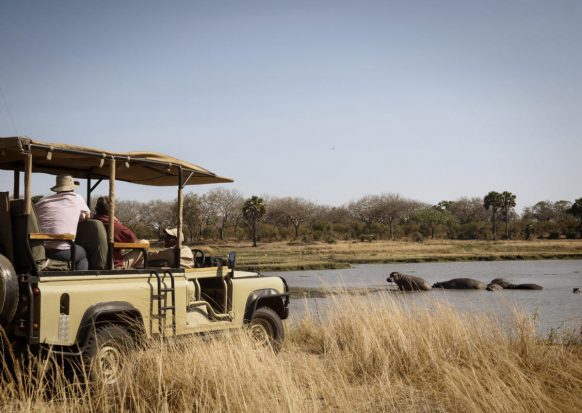Don’t miss katavi national park’s adventures : Safari aficionados will just have to accept that Tanzania is so packed with “can’t miss” wildlife locations that they cannot all be visited in a single safari. Although it is far distant and remote, Katavi Plains is a must-see for enthusiasts, and since it is only 30 minutes away by air from Mahale, it may be paired well with the Mahale Mountains. Katavi is a true wilderness that is lonely, untamed, and hardly visited; those few brave souls who do make it there get a thrilling flavor of Africa as it must have been a century ago. It is the third-largest national park in Tanzania and is located in the far southwest of the nation within a shortened arm of the Rift Valley that ends in the shallow, ominous expanse of Lake Rukwa.

At 4,471 sq. km., Katavi is sizable but only covers a portion of a much wider ecosystem. Broad-leaved woodlands, flat-topped acacia bush country, wide swamps, and lakes are interspersed with expansive open plains. Other southern locales include Nyerere National Park, Ruaha, Mahale Mountains National Park, and Gombe National Park go nicely together with Katavi. The majority of Katavi is covered in a hypnotically featureless tangle of brachystegia woods, which is home to sizable but elusive populations of eland, sable, and roan antelopes that are specific to the area. However, the Katuma River and associated floodplains, including the seasonally active Lakes Katavi and Chada, are the primary focus for wildlife watching within the park. These beautiful, marshy lakes offer a sanctuary for countless waterbirds during the rainy season and also host Tanzania’s highest densities of hippos and crocodiles.
This is a very seasonal location, only open from July to October during the dry season. It is extremely remote, but this remoteness actually works to its advantage because during the long wet season, which lasts from October to May (8 months), the wild animals have free reign over a vast hinterland that is both inside and outside the Park and is thousands of square kilometers in size and essentially uninhabited by humans. Here, they can roam, live, and procreate. As the dry season approaches, they are gradually compelled back to Katavi’s lakes and swamps, where they become increasingly crowded.
Large portions of the Park, such the Mlele escarpment with its waterfalls, Lake Paradise, and the surrounding countryside, are rarely visited. Katavi is one of those locations that hasn’t altered much since the first European explorers began traveling into the heart of Africa. It’s the kind of location that earned this continent its reputation for being impenetrable, enormous, and teeming with big animals. There, you’ll require at least three days.
Elephants can be spotted regularly by September, and the amount of buffalo is astounding, with herd after herd of 1000 animals or more grazing the deserted flood plains. Thousands of hippo and crocodiles are forced into dwindling ponds and mud pits, where regular battles break out between the hippo bulls. Large Topi cattle also congregate in the flood plains. Predators are present in large numbers, including lions and spotted hyenas. Male lions have huge, strong physique and extremely short manes. Huge swaths of broadleaved forests (Miombo) and Acacia trees can be found in the hinterland, where Lichtenstein’s hartebeest and Roan antelope can also be seen. Africa transforms you permanently, like at no place on earth. After you’ve been there will be never remain the way you are.
Different activities can be done here by the visitors. Most of them are very interesting as they touches people’s faith and emotions such visiting the tamarind tree. You will a lot of beautiful cultures of Tanzania and know how they live and their worshiping activities. The primary activity is game drive by car. This activities is as good for all as you will be accompanied with a professional guide in the park. Although guided walking safaris that include one or more nights in a lightweight fly camp are also very common. They provide an ample time for visitors to experience nature of the park in a closest manner. Through walking, you will be able to see animals, smell, and see animal and insects tracts and so on.

Visit the tamarind tree beside Lake Katavi where the ghost of the legendary hunter Katabi, after whom the park is called, resides; residents continue to leave offerings there in hopes of winning the spirit’s favor.
The park can be reached through different methods. Through Air; Small, bush-friendly light aircraft like the Cessna Caravan are used for scheduled flights into Katavi National Park from Arusha, Kilimanjaro, Kigoma, Tabora, Mwanza, and Dar es Salaam. A flight from Dar es Salaam to Katavi takes around three hours, and one from Arusha takes about the same amount of time. It takes roughly two and a half hours to fly from Mwanza. All flights must land on the Ikuu airstrip, a gravel runway.
Also by Road; the trip from Mbeya is 550 kilometres (340 miles) long, making for an amazing full day’s travel. Mbeya is 838 kilometers from Dar es Salaam, bringing the total distance to 1,400 kilometers (870 miles), which will take at least 20 hours to go. The distance from Kigoma is 390 kilometres (240 miles) during the dry season.
Though by Rail, From Dar, Mpanda may be reached by rail through Tabora, whereupon one can take public transportation to Sitaliki, where one can schedule game drives. Give yourself plenty of time to get there and back if you’re traveling by land. Katavi national park is a must come park as it compose of a lot of attractions that are enough for your vacation or having good time with your family and friends. Welcome to Katavi national park the beautiful destination for you.


